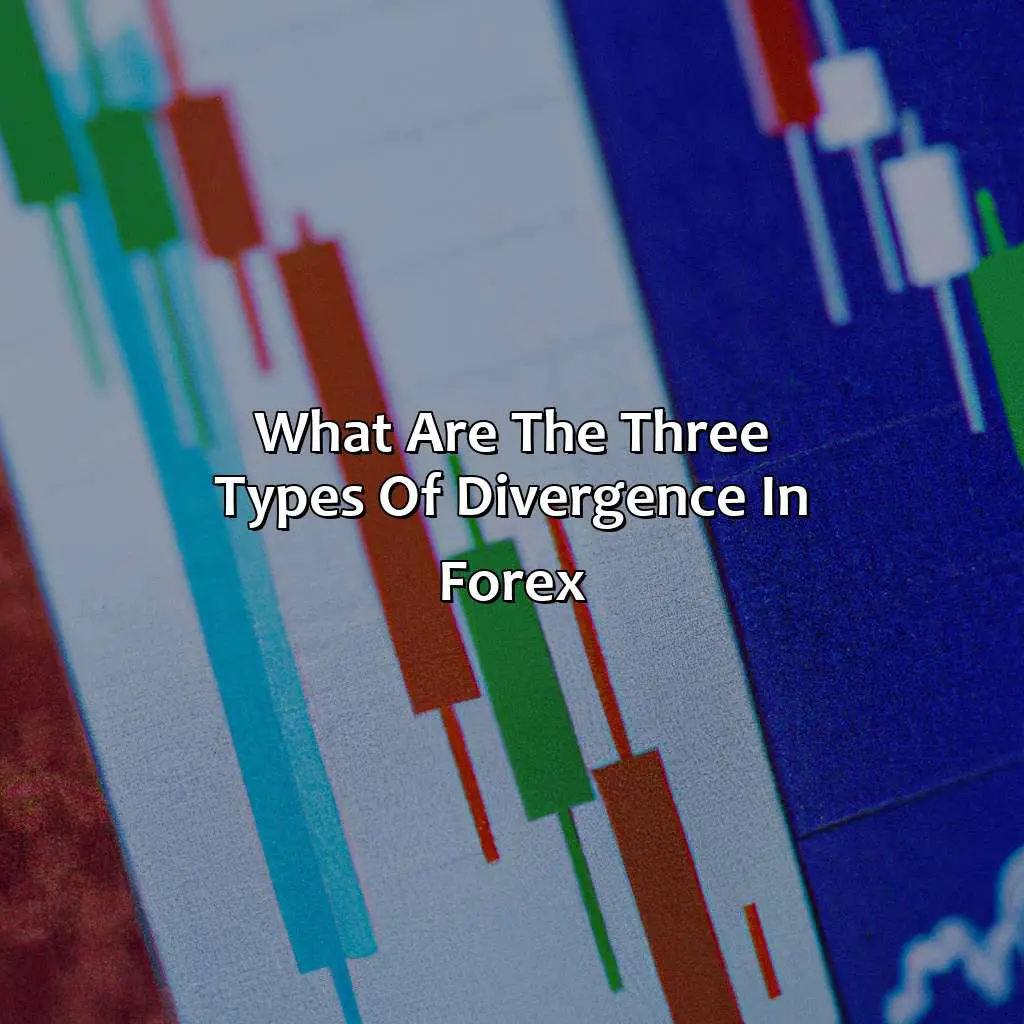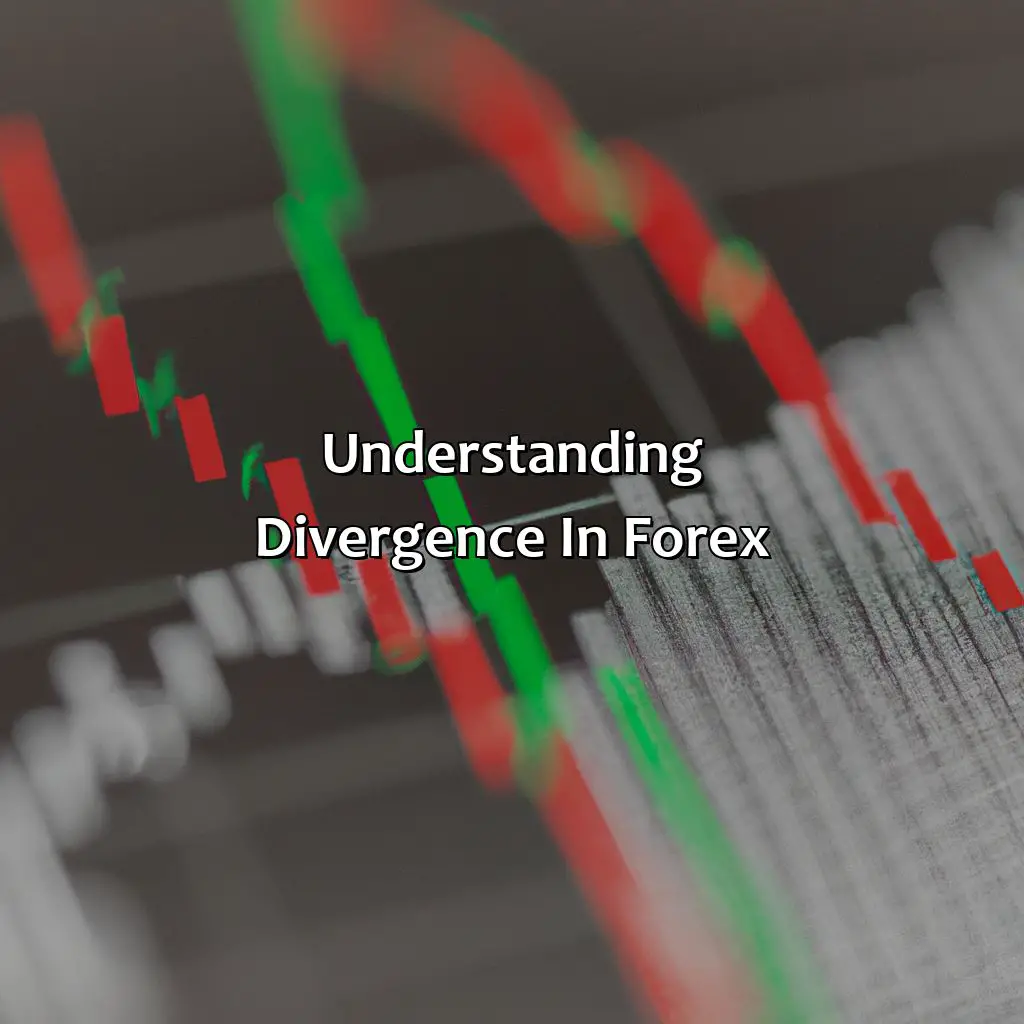
Key Takeaway:
- Divergence is a popular technical analysis tool used in forex trading to identify potential reversal or continuation in market trends.
- There are three types of divergence in forex: regular bullish and bearish divergence, and hidden divergence.
- Regular bullish divergence occurs when prices are making lower lows, but the indicator is making higher lows, indicating a potential trend reversal. Regular bearish divergence, on the other hand, occurs when prices are making higher highs while the indicator is making lower highs, indicating a potential trend reversal. Hidden divergence, on the other hand, indicates a potential continuation of the current trend.
Understanding Divergence in Forex

Photo Credits: forexbrokerreport.com by Dennis Taylor
Let’s explore divergence in the Forex market. It’s important for analysis!
First, we’ll define divergence in relation to Forex and technical analysis. We’ll look at how indicators can be used to spot divergences.
Then, we’ll talk about why it’s important to consider divergence in your trading strategy. Finally, we’ll discuss how it helps with market analysis.
Definition of Divergence
Divergence in forex is a commonly used term in technical analysis and indicators. It refers to the difference between price movements and the indicators that track them. This creates discrepancies, which can result in potential trading opportunities.
As explained above, divergence occurs when there’s a discrepancy between price action and the corresponding indicator. The indicator tracks market trends and changes, such as moving averages or oscillators like RSI or MACD. When the price of an asset moves in one direction while an indicator moves in another, it indicates a divergence.
Technical analysis experts know how important divergences are since they can signal the possibility of an emerging trend early on before other traders catch up or even before the trend actually starts. Traders can use divergences as opportunities to enter trades using appropriate risk management strategies.
It’s essential to note that not all divergences have the same implications for trading decisions. There are three types: regular bearish divergence, regular bullish divergence, and hidden divergence. Understanding these distinctions is crucial for applying them correctly.
Don’t miss out on the benefits of including divergences in your forex trading strategy. By incorporating them appropriately, you may be able to spot developing trends earlier than your peers and act on them quickly with minimal risks involved.Divergence in Forex: because sometimes the market just can’t make up its mind.
Importance of Divergence in Forex Trading
Divergence holds significant importance in forex trading strategy and market analysis. It allows traders to identify potential price reversals or trend continuations and determine entry and exit points for profitable trades. Notably, divergence reflects the difference in price movement versus technical indicators, indicating underlying imbalances between supply and demand. By understanding divergence types, traders can speculate on possible future price movements and adjust their strategy accordingly to minimize risk.
Furthermore, with the aid of oscillators such as RSI or MACD, traders can quickly spot divergence opportunities by using visual cues like trendlines or support and resistance levels. In addition, diversified trading strategies incorporating divergences can enhance overall performance by providing a high probability of profitable trades.
Despite its benefits, novice traders should carefully avoid certain common mistakes while executing the divergence-based trading approach. These may include over-reliance on indicator readings without internalizing market conditions, ignoring other important factors influencing price trends like news events or economic data releases.
Interestingly enough, divergences have been used over time to forecast significant changes in stock prices due to accompanying shifts in underlying business fundamentals that result in subsequent investor sentiment changes. Thus, identifying divergence patterns also proves relevant beyond the forex market.
Forex traders know the importance of spotting bullish and bearish divergence, but often overlook the hidden kind as a valuable tool in technical analysis.
Types of Divergence in Forex

Photo Credits: forexbrokerreport.com by Jerry Miller
Let’s dive into the nuance of divergence in forex trading! We’ll look at three types: Regular Bearish, Regular Bullish, and Hidden. Each has its own unique characteristics. They can signal trend reversals or trend continuations. Utilize this as a tool in your technical analysis strategy!
Regular Bearish Divergence
Bearish Divergence pertains to a situation in Forex trading where the price of an asset is trending upward while the technical indicators are indicating a trend reversal. This reveals that demand for the asset decreases despite it being boosted by optimistic investors. Typically, bearish divergence marks a change direction from bullish to bearish trends in the market.
Bearish divergence often occurs when prices experience new highs, but technical indicators show negative momentum and begin to drift lower. One reason for this could be that as prices hit new highs, it becomes difficult to sustain high buying pressure, resulting in decreased demand and waning bullish sentiment. Consequently, investors begin selling off their assets leading to lower prices.
It’s important to note that not all bearish trends signify bearish divergence or indicate that an asset is going through unfavourable market behaviour. Instead, experienced traders use technical analysis techniques like moving averages and other indicators such as RSI or MACD charts to identify potential high risk trade opportunities and execute sound trading strategies.
Missing out on lucrative trade options due to lack of knowledge about Bearish Divergence can lead one down path regrettable losses. It’s crucial for traders/market participants to keep up with forex technical analysis changes regularly and refine their trading strategies accordingly- Fear of missing out on profitable trades can awaken traders’ curiosity towards all types of divergences present in forex market trends.
When it comes to bullish divergence in forex, the trend is your friend…until it’s not.
Regular Bullish Divergence
Regular bullish divergence is a crucial part of technical analysis in forex trading. It occurs when the price makes lower lows, but the oscillator shows higher lows, indicating a possibility of trend reversal. Furthermore, it suggests that buyers are gaining strength and may push the price upward. This type of divergence can be used to identify potential buying opportunities by traders.
To spot regular bullish divergence, traders should use different oscillators such as RSI, MACD, or Stochastics. When the oscillator creates two lower lows while the price chart depicts two lower highs and trends in opposing directions gradually, it indicates a bullish divergence. It highlights a change in momentum from bearish to bullish and can signify better profit opportunities.
In addition to this, one critical detail about regular bullish divergence is that it is only meaningful in conjunction with an uptrend that has been confirmed by at least three consecutive higher highs in price action. This confluence confirms that the market trend is upward moving and increasing overall strength.
A true history about regular bullish divergence occurred in June 2012 when the euro was weakening against sterling due to economic woes from Europe’s debt crisis. Traders who spotted regular bullish divergence had bought Euros without any hesitation because they anticipated that Euro’s value would appreciate soon due to new positive demand pressure. Finally and as expected they made substantial profits out of trading using this powerful indication of potential market changes brought on by regular bullish divergences outcomes to business success by making effective moves with regards to accurate market timing thereby turning profits amidst ever-growing forex volatility.
Uncover the secret of trend continuation with hidden divergence in forex technical analysis.
Hidden Divergence
In Hidden Divergence, the price makes higher lows or lower highs while the oscillator shows lower lows or lower highs. This indicates that the trend is strong and apt for traders to forecast entry levels into the market.
It is crucial for traders to identify Hidden Divergence as it can lead to high profits if they are traded correctly. It enables traders to anticipate changes in trend directions effectively.
Pro Tip: Always combine Hidden Divergence with additional indicators that can confirm its accuracy for reliable trades.
Finding divergence in forex can be tricky, but armed with oscillators and indicators, you can trade it like a pro.
Identifying and Trading Divergence

Photo Credits: forexbrokerreport.com by Dylan Gonzalez
To spot and exchange divergence in forex, you must comprehend how to recognize it with oscillators. We will talk about utilizing oscillators and the advantages of technical analysis, indicators, chart patterns, and candlestick patterns in two subsections:
- “Identifying Divergence with Oscillators”
- “Trading Strategies using Divergence”
The right trading strategy is vital to identify and trade divergence in forex.
Identifying Divergence with Oscillators
Technical analysis in forex trading heavily depends on various indicators and tools, which includes oscillators. These are essential sets of technical indicators to help traders identify the market trends. The process of identifying divergence with oscillators is a widely adopted method to recognize upcoming market movements, either as a bullish or bearish trend.
Oscillators assist in measuring the difference between their metrics like momentum, volatility, etc., and their mean value over a term. It determines the forex prices’ pattern and rolling expectations in the future direction. A semantic NLP variation could be recognizing divergence by analyzing points where an oscillator’s moving average diverges from the price chart data.
It’s crucial to analyze the space between chart highs and lows along with the matching peaks and troughs from an oscillator. Figuring out flipping points creates opportunities in corrective waves that traders can exploit in confirmed trending markets using divergence-based techniques.
To practice identifying divergences with oscillators aptly, one must understand how technical analysis works and should be able to interconnect various analyses together to build a more comprehensive context which consequently creates a profitable strategy.
Incorporating oscillators into your forex trading plan can significantly boost profits if done correctly. Hence, it’s important not only to recognize them but also incorporate them proficiently into your overall technical analysis plan before taking any decisions.
Need a profitable trading strategy in forex? Look no further! Mastering technical analysis, chart patterns, and candlestick patterns using divergence can be the game-changer you’ve been waiting for.
Trading Strategies using Divergence
Trading with Divergence is a widely used trading strategy in Forex. It uses technical analysis and chart patterns to identify divergence, which occurs when the price of a currency pair moves in opposite directions from an indicator. Here are some effective ways for Trading Strategies using Divergence:
- Using indicators like MACD, Stochastics, RSI, and CCI as the basis for divergence spotting.
- Wait for the trend reversal confirmation before opening a trade in the opposite direction with stop-loss order placement.
- Trade at trend line breaks or pattern formation with convergence validation and strict money management rules.
- Incorporate candlestick patterns and trading volume analysis to further strengthen the validity of the entry signal generated by divergence assessment.
- Incorporate positive/negative divergences confirming each other by using multiple oscillators combination.
Avoid relying entirely on studying only one oscillator; instead, use multiple to identify any unclear divergences. Practicing these strategies can help increase your profits and minimize your losses while trading Forex.
There are several potential opportunities when trading with Divergence as prices are expected to change direction soon. It’s crucial not to miss these opportunities; try incorporating Trading Strategies using Divergence into your technical analysis toolbox today!
Trading without proper risk management and emotional control is like driving blindfolded on a rollercoaster – not recommended for anyone, especially in forex.
Common Mistakes to Avoid while Trading Divergence

Photo Credits: forexbrokerreport.com by Timothy Williams
Common Mistakes to Avoid while Trading Divergence
Divergence trading in forex requires careful observation and analysis of price movements. To prevent losses and maximize profits, it is essential to avoid certain common mistakes.
Trading Divergence – Common Mistakes to Avoid:
- Ignoring the trend – Failing to consider the prevailing trend can lead to erroneous decisions in trading divergence.
- Overlooking risk management – Divergence trading involves significant risks. Ignoring risk management practices can lead to substantial losses.
- Lacking emotional control and discipline – Emotions and impulsive actions can undermine successful divergence trading. Maintaining emotional control and discipline is essential.
Additionally, it is crucial to note that not all divergences lead to profitable trades. Keeping this in mind can help avoid unnecessary losses while trading divergence.
Pro Tip: When trading divergence, it is recommendable to use several indicators to confirm signals and strengthen trading decisions.
Remember, success in divergence trading in forex depends on vigilant observation, strategic analysis, proper risk management, and maintaining emotional control and discipline.
Five Facts About The Three Types of Divergence in Forex:
- ✅ The three types of divergence in forex are regular bullish, regular bearish, and hidden divergence. (Source: Investopedia)
- ✅ Regular bullish divergence occurs when the price is making lower lows while the indicator is making higher lows. (Source: BabyPips)
- ✅ Regular bearish divergence occurs when the price is making higher highs while the indicator is making lower highs. (Source: DailyFX)
- ✅ Hidden bullish divergence occurs when the price is making higher lows while the indicator is making lower lows. (Source: Trading Strategy Guides)
- ✅ Hidden bearish divergence occurs when the price is making lower highs while the indicator is making higher highs. (Source: FX Street)
FAQs about What Are The Three Types Of Divergence In Forex?
What are the three types of divergence in forex?
Divergence is a powerful tool in forex trading. There are three types of divergence: positive signal, negative signal, and sideways momentum. Positive signal divergence happens when the price is making lower lows, but the indicator is making higher lows. Negative signal divergence happens when the price is making higher highs, but the indicator is making lower highs. Sideways momentum divergence happens when the price is moving sideways, but the indicator is trending higher or lower.
How can I use divergence for risk control in forex trading?
Divergence can be used as a risk control tool in forex trading. A false positive can occur where the indicator presents a divergent signal, but the price does not react as expected. To mitigate this risk, traders can use leading indicators like the Awesome Oscillator and the Stochastic Oscillator. These indicators can help traders confirm a divergence signal before they sell high or buy low.
What is FOREX.com and how can I open a demo account?
FOREX.com is a forex trading platform that offers competitive spreads on global FX pairs. Traders can open a demo account with FOREX.com to practice trading with virtual funds. A demo account is a risk-free way to learn how to use divergence and other trading tools.

